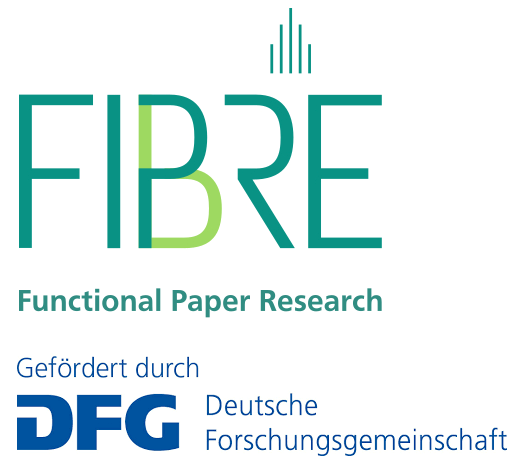Multi-Scale Characterisation of Interactions between Cellulose Interfaces and Polymers
The project addresses a better understanding and control of the polymer adsorption at paper fibres. One general goal of the PAK 962 is the functionalisation of paper with polymers in order to get novel properties and to improve its properties like higher wet strength or elasticity. The challenge is a long-term stable polymer binding at the paper via chemisorption or physisorption. At the same time the functional properties should be preserved, like pronounced swelling ability and elasticity. For a better understanding and control of the polymer immobilisation at paper fibres and its effect on the paper properties more detailed studies on smaller length scales are required.
The present project deals with polymers as adhesive agents on different small length scales (nm up to several m). The polymer adsorption will be characterised in terms of adsorbed amount, chain conformation, thickness, density and roughness of the polymer layer.A lot of methods for the characterisation of surfaces require planar surfaces. Therefore, a planar surface consisting of cellulose will be prepared in order to imitate a surface of a paper fibre. Thin films of micro-crystalline cellulose (MCC), cellulose fibres (nano fibrilated cellulose, NFC) und trimethylsilyl-cellulose (TMSC) will be prepared on planar substrates.
Subgoals are to achieve an irreversible binding of cellulose at the substrate as well as controlled binding of polymers at cellulose model surfaces. Another subgoal is a better understanding of the relation between structure, swelling behaviour and the mechanical properties of polymers and cellulose model surfaces. In a next step the polymer excess close to the fibre crossing points will be studied. Therefore, the model system will be extented towards paper fibres (diameter: several µm) which are adsorbed onto the cellulose model surface. The polymer adsorption close to the fibres and the crossing points, respectively, will be studied with scanning force microscopy. In this context, the effect of the fibre orientation on the polymer binding and the polymer mobility, respectively, will be investigated.Beside the polymers synthesized/used in area A of the PAK 962, polymer microgels will be used, which are synthesized in our group. The soft microgels are very adhesive and leads to fibre junctions. They are sensitive to external stimuli like temperature, pH, light and magnetic field. They will be also used in a later period of the project to build up sensoric papers.


